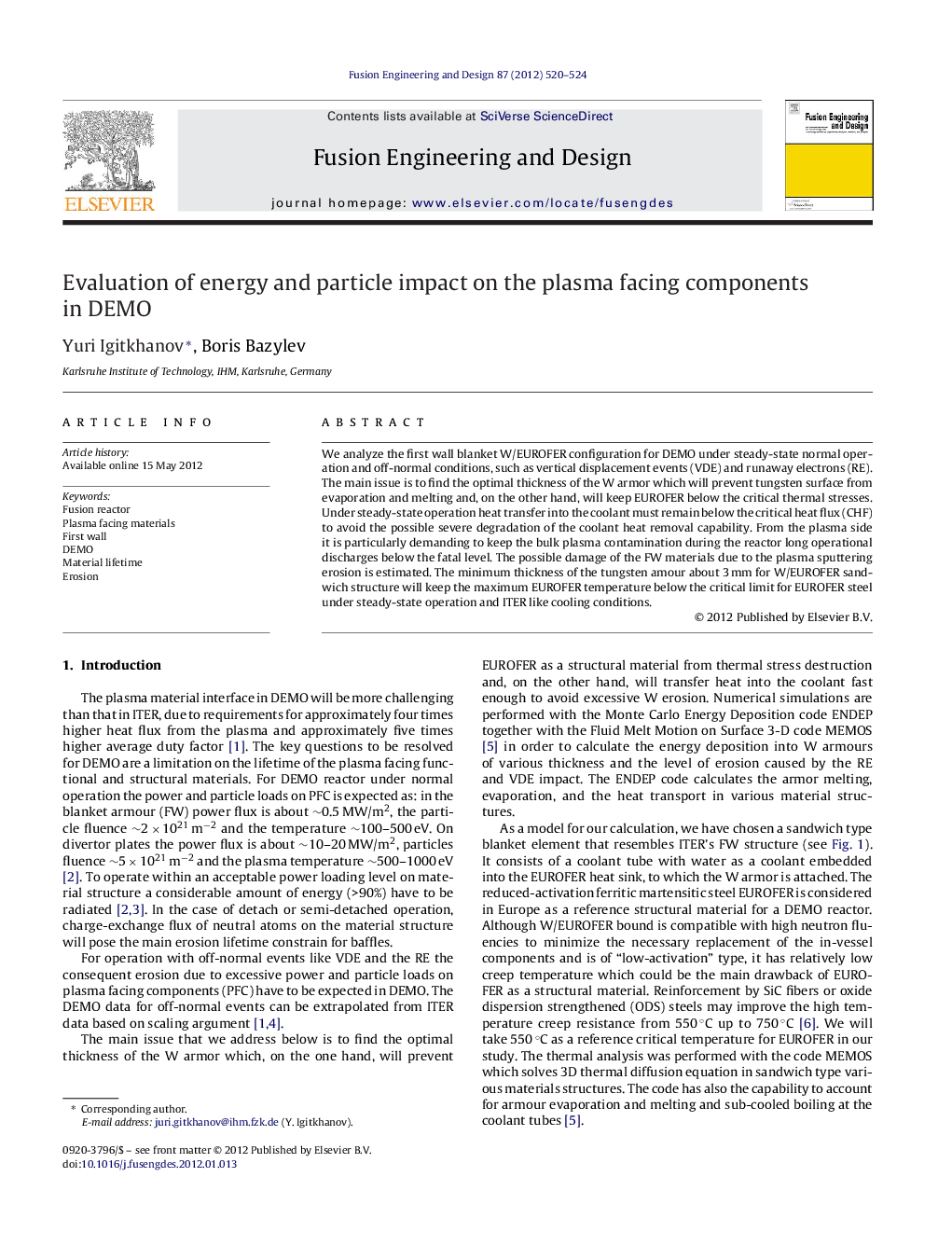| Article ID | Journal | Published Year | Pages | File Type |
|---|---|---|---|---|
| 272221 | Fusion Engineering and Design | 2012 | 5 Pages |
We analyze the first wall blanket W/EUROFER configuration for DEMO under steady-state normal operation and off-normal conditions, such as vertical displacement events (VDE) and runaway electrons (RE). The main issue is to find the optimal thickness of the W armor which will prevent tungsten surface from evaporation and melting and, on the other hand, will keep EUROFER below the critical thermal stresses. Under steady-state operation heat transfer into the coolant must remain below the critical heat flux (CHF) to avoid the possible severe degradation of the coolant heat removal capability. From the plasma side it is particularly demanding to keep the bulk plasma contamination during the reactor long operational discharges below the fatal level. The possible damage of the FW materials due to the plasma sputtering erosion is estimated. The minimum thickness of the tungsten amour about 3 mm for W/EUROFER sandwich structure will keep the maximum EUROFER temperature below the critical limit for EUROFER steel under steady-state operation and ITER like cooling conditions.
► We analyze the first wall blanket W/EUROFER configuration for DEMO under steady-state normal operation and off-normal conditions, such as vertical displacements events (VDE) and runaway electrons (RE). The main issue is to find the optimal thickness of the W armor which will prevent tungsten surface from evaporation and melting and, on the other hand, will keep EUROFER below the critical thermal stresses. ► The minimum thickness of the tungsten amour about 3 mm for W/EUROFER sandwich structure will keep the maximum EUROFER temperature below the critical limit for EUROFER steel under steady-state operation and ITER like cooling conditions. ► The W surface temperature and the max. EUROFER temperature are increasing with incoming heat flux. For reference conditions (Dw ∼3 mm, DEUROFER ∼4 mm) the maximum tolerable heat flux which does not causes in thermal stresses in structural material is about ∼13.5 MW/m2. ► The RE deposit their energy deeper into W armour and for energies ≥50 MJ/m2 and deposition times ≤0.1 s, the minimum armor thickness required to prevent EUROFER from thermal distraction is ≥1.4 cm. ► However, at this thickness the W surface melts. For higher RE energy deposition rates (≥100 MJ/m2 in 0.1 s), the required armor thickness to prevent thermal destruction is even larger so that the bulk of the armor layer will melt and evaporate.
